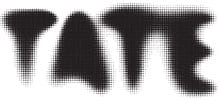In recent years public art museums have formulated different strategies for working with gender equality and feminist perspectives on museum collections. The Second Museum of Our Wishes campaign at Moderna Museet in Stockholm, the shows elles@centrepompidou in Paris and Goddesses at Nasjonalmuseet in Oslo, and MoMA’s Modern Women project are but a few examples.
In light of this, the overarching question for the research workshop was: what would a feminist collection be and how could it be realized? Is such a collection even desirable? Proposed further questions to explore were: What practices would a curator of a feminist collection engage in? What, indeed, would the feminist aspect of a feminist collection be? What possibilities and limitations does the notion of ‘a feminist collection’ pose? How could a feminist collection further feminist politics in a broader sense? The workshop programme included three presentations followed by discussions and a closing discussion.
Andrea Kroksnes, ‘Goddesses or Monsters: how do women occupy art history?’
Andrea Kroksnes presented on the background and problems related to the exhibition Goddesses, which showed women’s and feminist art from the collection of Nationalmuseet, Oslo. The show was intended as a strong feminist and pedagogical statement, and the curatorial team was particularly interested in exploring the possibilities for feminism to create its own history without (re-)doing the art history it had critiqued. The curators refused to accept familiar “quality arguments” (art by women being dismissed as not good enough), and instead aimed at highlighting the structural reasons for the omission of women’s art from museum’s collections. A further crucial aspect of the show was to argue that feminism does not equal women.
Kroksnes’s presentation fostered a discussion on the location of feminist practices in the museum. Where do feminisms exist within the museum: in collection building, through exhibitions and/or in the production of a specific discourse on art? The question was raised as to whether ‘feminism’ can reside in art works per se, or is situated in curatorial practices and feminist contexts.
Georgiana Uhlyarik, ‘By any other name: Canadian Women Artists at the Art Gallery of Ontario.’
Speaking from her experiences as a curator at the Art Gallery of Ontario, Georgiana Uhlyarik argued for the importance of labelling feminist curatorial activities as feminist. With a concept borrowed from artist Allyson Mitchell, Uhlyarik proposed that not naming feminist practices for what they are would be to hysterectomize them: to deprive them of their agency. Uhlyarik proposed several examples of a feminist curatorial practice informed by feminism, e.g. to insist on paying a full price when purchasing women’s art; to safeguard the archives of women artists; and to devise installations that incorporate women’s practice (i.e. to replace those governed by biographies of prominent artists or schools). Uhlyarik identified institutional priorities as something that creates imperatives in museums to engage in visionary, ambitious and competitive activities; and by contrast presented the A.G.O. exhibition ‘At Work: Hesse, Goodwin, Martin’ as an example of a feminist curatorial practice that produced a successful and widely praised exhibition of women’s art practice in the absence of significant institutional commitment or resources.
Uhlyarik’s presentation started a discussion about what would be the possible curatorial strategies for a feminist collection, if we define the feminist as a way of interpreting and curating? The general impression of the workshop was also that we need to address the question of how we are to understand feminist practices in relation to queer practices, the latter being defined as the practice of deliberately marginalizing oneself. The workshop emphasized that a multiplicity of tactics is necessary, which might include using feminism as blasphemy in the context of the art museum. Another suggestion was to stop filling gaps and start looking for the necessary losses in the established practices. The workshop also discussed the importance of doing research parallel to collection building and raised the possibilities of multi media to offer alternatives to museologically-fixed narratives.
Andrea Kollnitz and Linda Fagerström, ‘Gender and Region: The Representation of Women Artists in Swedish Art Museums.’
Andrea Kollnitz and Linda Fagerström presented part of a recent research project on the relation between museums’ (regional) identities and gender issues in four Swedish art museums. The presentation focused on Malmö Art Museum and Norrköping Art Museum. Kollnitz and Fagerström put a strong emphasis on the fact that quantity does not equal equality. Again, the director effect was put under scrutiny, because in both cases the collections strongly reflect the individual tastes and friendship networks of the directors. Their presentation initiated a discussion on the gap between the two art histories that are presented at the two institutions, and those presented at a national or international level. The workshop reflected on the issue of who is producing art history, and who is questioning it? The general impression was that museums are often unwilling to re-think their identity and role, a circumstance that might be particularly precarious in the Swedish context as there are virtually no structures for scholarship in the art museums. Therefore, art historians belonging to academia have scrutinized the art historical narratives produced by museum staff.
There are limited possibilities for changing existing collections, hence a more reasonable strategy is to scrutinize 20th century collecting through 21st century (feminist) curatorial and educational programming. The workshop suggested that this is yet another reason to stress the importance of dialogue between academia and museum when it comes to (critical) exhibition history. Another crucial point was that museums are closer to the market; hence the tension to be addressed might rather be between academia and the market.
The workshop also discussed the relation between the collection and the display, and suggested to consider collections as study and research collections as well as displayed collections. In relation to this internet might proffer a potential for balancing democracy and minority interests, as there are no physical limitations on the internet as in the museum.
Closing discussion
 The workshop concluded that feminism is not attainable in the collection which is a) too complex in its production and b) because feminism is necessarily marginal. Feminism can exist in interpretation and programming, but the converse is also true: interpretation can hysterectomize feminist art. The workshop suggested considering feminism not as an absolute, but as a desire that shapes activity. Hence, the notion of a feminist collection may be part of a strategic utopianism, which would aim at restructuring the art experience away from patriarchy toward the necessary pluralism, contradictions and disagreements of feminisms. The workshop discussed what ways of exhibition making would open up a feminist practice and suggested that giving up established (male) modernist practices, e.g. blockbuster solo shows, is crucial. This would also include abandoning gender equality as a prioritized agenda, since it only reinscribes categories.
The workshop concluded that feminism is not attainable in the collection which is a) too complex in its production and b) because feminism is necessarily marginal. Feminism can exist in interpretation and programming, but the converse is also true: interpretation can hysterectomize feminist art. The workshop suggested considering feminism not as an absolute, but as a desire that shapes activity. Hence, the notion of a feminist collection may be part of a strategic utopianism, which would aim at restructuring the art experience away from patriarchy toward the necessary pluralism, contradictions and disagreements of feminisms. The workshop discussed what ways of exhibition making would open up a feminist practice and suggested that giving up established (male) modernist practices, e.g. blockbuster solo shows, is crucial. This would also include abandoning gender equality as a prioritized agenda, since it only reinscribes categories.
Participants
- Andrea Kollnitz, Stockholm University
- Andrea Kroksnes, Nasjonalmuseet, Oslo
- Anna Lundström, Stockholm University
- Annika Öhrner, Uppsala University
- Georgiana Uhlyarik, Art Gallery of Ontario, Toronto
- Jessica Sjöholm Skrubbe, Stockholm University (workshop leader)
- Katrin Kivimaa, Estonian Academy of Art, Tallinn
- Lara Perry, University of Brighton (network project leader)
- Linda Fagerström, Malmö University College
- Magdalena Holdar, Stockholm University
- Nancy Proctor, Smithsonian American Art Museum, Washington, D.C.
- Patrik Steorn, Stockholm University
- Vicky Horne, University of Edinburgh
2011-03-07 /Jessica Sjöholm Skrubbe










Leave a Reply